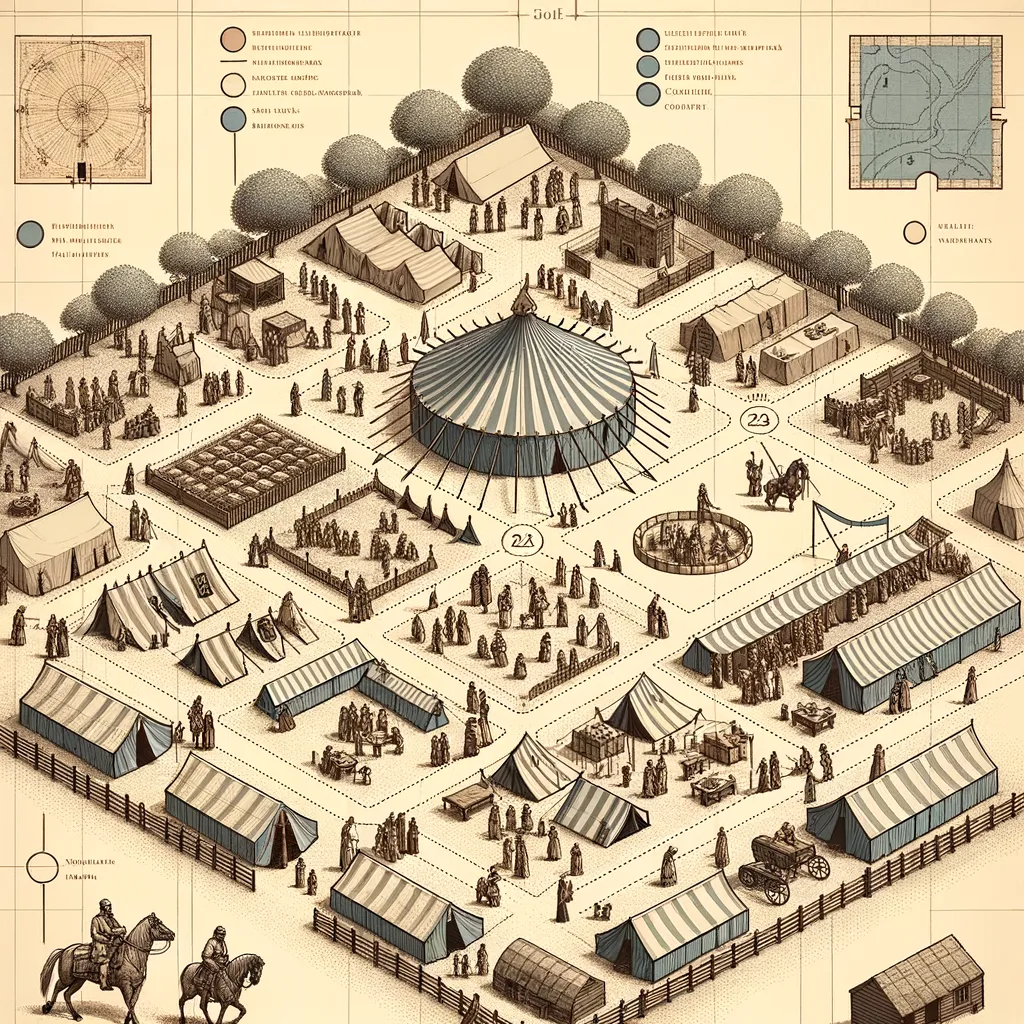Mastering Time Travel: A Parent’s Guide to Organizing a Historical Reenactment Event
Welcome to a thrilling journey back in time! If you’ve always been fascinated by the stories and lifestyles of people who lived in different eras, organizing a historical reenactment event is a brilliant way to bring those times to life for your family and community. Whether you’re a history buff, a parent looking to provide enriching experiences for your children, or someone eager to ignite a love for history in those around you, this guide is your first step towards creating an unforgettable journey through time.
From Egyptian pharaohs to medieval knights, and from Victorian ladies to 1950s rock and roll, history is filled with fascinating characters, events, and cultures. Imagine giving your child the chance to walk in the shoes of a Roman soldier, or to dress up as a pioneer exploring new lands. This guide will help you turn those dreams into reality, covering everything from choosing the right era and location, to recruiting volunteers, and even incorporating educational elements into your event. It’s all about making history fun, engaging, and accessible for kids of all ages.
Before diving into the planning details, it’s essential to mention the importance of having the right gear and setting for your historical reenactment. A perfect way to source what you’ll need is by checking out Outdoors for authentic outdoor equipment and Camp places for the ideal location. These resources are invaluable in bringing the past to life with authenticity and excitement.
Planning Your Historical Reenactment Event
The success of your historical reenactment relies on meticulous planning and a dash of creativity. Here’s how to start:
Selecting the Right Time Period
The first step is to choose an era that is both interesting to your target audience and feasible in terms of resources available to you. Consider the ages of the participants, the historical knowledge of your community, and what costumes and props would be most accessible. A popular period for such events is the Medieval era, known for its knights, castles, and colorful festivals. However, don’t shy away from less common periods; every era has its unique charm and learning opportunities.
Location, Location, Location
Finding the perfect setting is crucial for your historical reenactment. The venue should be both safe for participants and conducive to creating an immersive experience. Local parks, school grounds, or even your backyard can be transformed into historical landscapes with a bit of imagination and planning.
Gathering Your Reenactors
Once you have settled on a time period and location, it’s time to recruit your actors. These can be friends, family members, or local history enthusiasts. Emphasize that no previous acting experience is necessary – just a willingness to have fun and learn something new. Provide participants with resources or workshops on their characters, costumes, and the era to help them feel prepared and excited about their roles.
At this stage of planning, it’s also important to consider the educational aspect of your event. Reenactment can be a powerful tool for learning, so think about how you can incorporate historical facts, demonstrations, and even hands-on activities into the experience. Perhaps you could invite a local historian to give a short talk, or organize workshops where children can try their hand at traditional crafts or cooking methods from the era.
Organizing a historical reenactment event is not just an opportunity to educate and entertain; it’s a unique way to bond with your family and connect with your community. As you step through the planning stages outlined in this guide, remember that the ultimate goal is to create a memorable and enriching experience that participants of all ages can enjoy. Stay tuned for the next parts where we’ll delve deeper into the intricacies of event planning, costume preparation, and making history come alive with authenticity and flair.
5 Essential Tips for Parents Preparing for a Historical Reenactment Event
Embarking on the adventure of organizing a historical reenactment event can be a rewarding experience that offers a unique blend of education, fun, and community building. For parents looking to create an unforgettable experience that will transport their children and guests back in time, paying attention to detail and thorough preparation are key. Here are five essential tips to keep in mind as you plan your event.
1. Dive Deep into Historical Research
Accuracy is the cornerstone of an impactful historical reenactment. Start with extensive research into the chosen time period to ensure every aspect of the event, from the costumes to the dialogue, reflects the era accurately. Utilize libraries, online databases, and consult with historians to gather information that will help bring authenticity to your event. This step will not only enrich the reenactment but also spark a deeper interest in history among the participants and spectators.
2. Focus on Interactive Learning
Create an engaging learning environment by incorporating interactive elements into your event. Plan activities such as archery lessons, calligraphy workshops, or cooking demonstrations using period-accurate recipes. These activities offer hands-on learning opportunities and make historical facts memorable by connecting them to physical experiences. By doing so, you’re ensuring that the event is not only educational but also exciting for children and adults alike.
3. Pay Attention to Costumes and Props
Costumes and props play a significant role in transporting participants back in time and making the reenactment feel real. Encourage participants to create or source costumes that are as historically accurate as possible within your budget constraints. Offer guidance and resources on where to find appropriate clothing and accessories. Local thrift stores, online forums, and costume rental shops are great places to start. Remember, the goal is to represent the era as faithfully as possible, so even small details like buttons and shoes can make a big difference.
4. Ensure Safety and Comfort for All Participants
While the authenticity of the historical reenactment is important, participant safety and comfort should always be a top priority. Ensure that the venue is safe and accessible for everyone, including those with mobility challenges. If your event involves combat reenactment, such as sword fighting or archery, take extra precautions by using safe, replica weapons and providing proper supervision and safety equipment. Additionally, consider the weather and the need for amenities such as restrooms, shade, and water stations to keep everyone comfortable throughout the event.
5. Promote Your Event and Foster Community Engagement
Successful historical reenactments often feature a strong sense of community. Promote your event through local schools, community centers, and social media to attract a diverse group of participants and spectators. Involve local businesses by seeking sponsorships or donations, which could range from food and drink for the event to prizes for costume contests. Creating partnerships with local organizations not only helps with the logistics of the event but also fosters a sense of communal effort and pride in bringing history to life.
Organizing a historical reenactment event requires dedication, creativity, and a passion for history. By following these tips, you can create an authentic, engaging, and enjoyable experience that participants will remember for years to come. It’s an opportunity to immerse your family and community in a different time period, educating and inspiring them through the power of historical storytelling. Let the planning begin, and watch as history unfolds before your very eyes, creating a rich tapestry of learning and enjoyment for all involved. Remember, it’s not just an event; it’s a journey through time that has the power to ignite imaginations and foster a deep appreciation for the past.
Disclaimer
The articles available via our website provide general information only and we strongly urge readers to exercise caution and conduct their own thorough research and fact-checking. The information presented should not be taken as absolute truth, and, to the maximum extent permitted by law, we will not be held liable for any inaccuracies or errors in the content. It is essential for individuals to independently verify and validate the information before making any decisions or taking any actions based on the articles.




